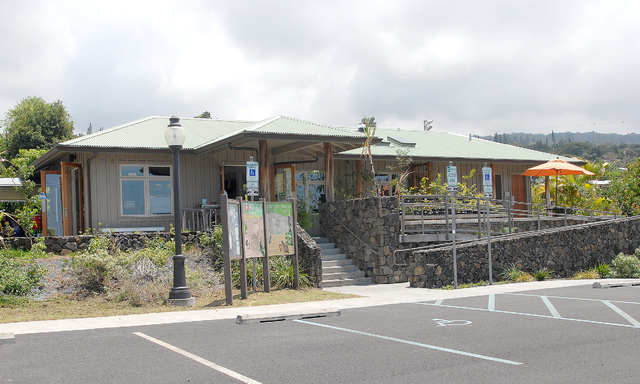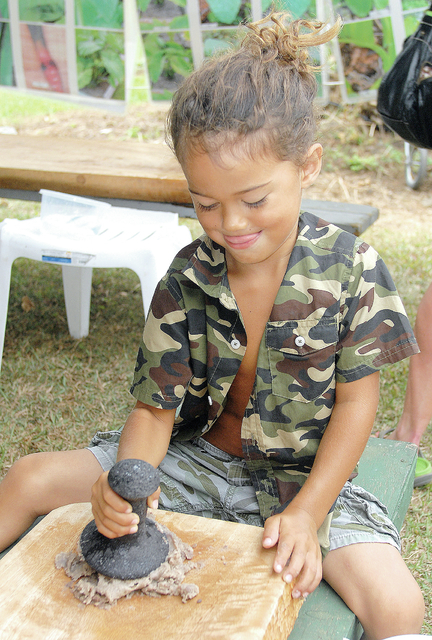Amy B.H. Greenwell Ethnobotanical Garden, an educational and cultural gem in Captain Cook, will close its doors to the public at the end of the month. ADVERTISING Amy B.H. Greenwell Ethnobotanical Garden, an educational and cultural gem in Captain Cook,
Amy B.H. Greenwell Ethnobotanical Garden, an educational and cultural gem in Captain Cook, will close its doors to the public at the end of the month.
The closure of the 15-acre oasis while Bishop Museum looks for a new owner/steward for the land, as well as hundreds of acres in Waipio, was confirmed Thursday.
“The decision has been made to close Amy Greenwell Garden effective January 31st in order to commence the process for identifying a new steward of this important community resource. The museum does not have a sale pending on the property at this time. Due to the nature of the garden’s annual budget, implementing this change provides a reduction in operating expenses for the museum in this transition,” Blair Collis, president and CEO of Bishop Museum, said in a statement issued by public relations firm Stryker Weiner &Yakota.
The garden also posted the announcement on its Facebook page.
“We will be closing to the public on January 31. Thank you for sharing this wonderful place with us. Don’t give up on us — Bishop Museum is looking for a new owner and steward of the Garden,” the post reads. “We can come through this better than ever and look forward to picking up again where we left off when the search for a new owner is over. mahalo!!!”
Peter Van Dyke, garden manager, reached Thursday, referred calls to the Oahu-based PR firm.
Following the closure, the museum will continue to maintain the property while looking for the next steward, Collis’ statement said. Plantings associated with the nursery operation will be available for sale along with some retail products.
“Staff members including the director of the garden have been retained and will be charged with care of the grounds during this transition,” Collis said.
The closure, more than two weeks away, follows last week’s announcement that the garden and 547 acres in Waipio, which amounts to just more than half of the valley, were up for sale. Together, the properties were valued a few years ago at about $10 million.
“I think it’s horrible,” said Ken Love, executive director of the Hawaii Tropical Fruit Growers Association. “I had a problem with the way Bishop does business anyway, but this is a shock — it’s been such an integral part of the community for so long. It should be given back to the Greenwell family, if anything.”
Located just north of Manago Hotel, the botanical garden, which focuses on the study of Hawaiian people and their plants, is home to more than 200 species of plants that grew in the traditional farms and native forests of Kona prior to the late 18th century and the arrival of Capt. James Cook.
The landscape reflects the typical Kona ahupuaa with four zones: coastal, dry forest, agricultural and upland forest.
It also features archaeological sites. “It’s really upsetting horticulturally. There were extremely rare and valuable plants there. It’s also been a breeding ground for some of the best researchers — even outside of the state,” Love said, noting he’s also found rare species of bananas at the garden.
Barbara Payne, a Captain Cook resident who is a member of the garden and has visited it for at least the past six years, said Thursday that she is saddened by the impending closure.
She’s gotten to know the staff very well through the years and spends Wednesdays there weaving lauhala.
“It’s just a beautiful place, it’s a teaching place and Amy Greenwell started this botanical garden for a reason, she was a very intelligent woman and planted the native plantings there that are cared for by the staff,” Payne said.
The garden is named for botanist Amy Beatrice Holdsworth Greenwell, one of 23 grandchildren of Henry Nicholas Greenwell, a soldier who became a merchant before coming to Hawaii in the 1850s. After college on the mainland, she returned to Hawaii in 1947 and began working with Bishop Museum, according to the museum. It was later in life that she resided at the property, which she transformed to feature pre-contact flora.
When she died at age 53 in 1974, she left the property to Bishop Museum as an educational and cultural resource.
The goal was to create an experience in which visitors and locals alike could revisit the Hawaiian past and explore the environmental splendors of ancient Hawaii, according to the museum.




